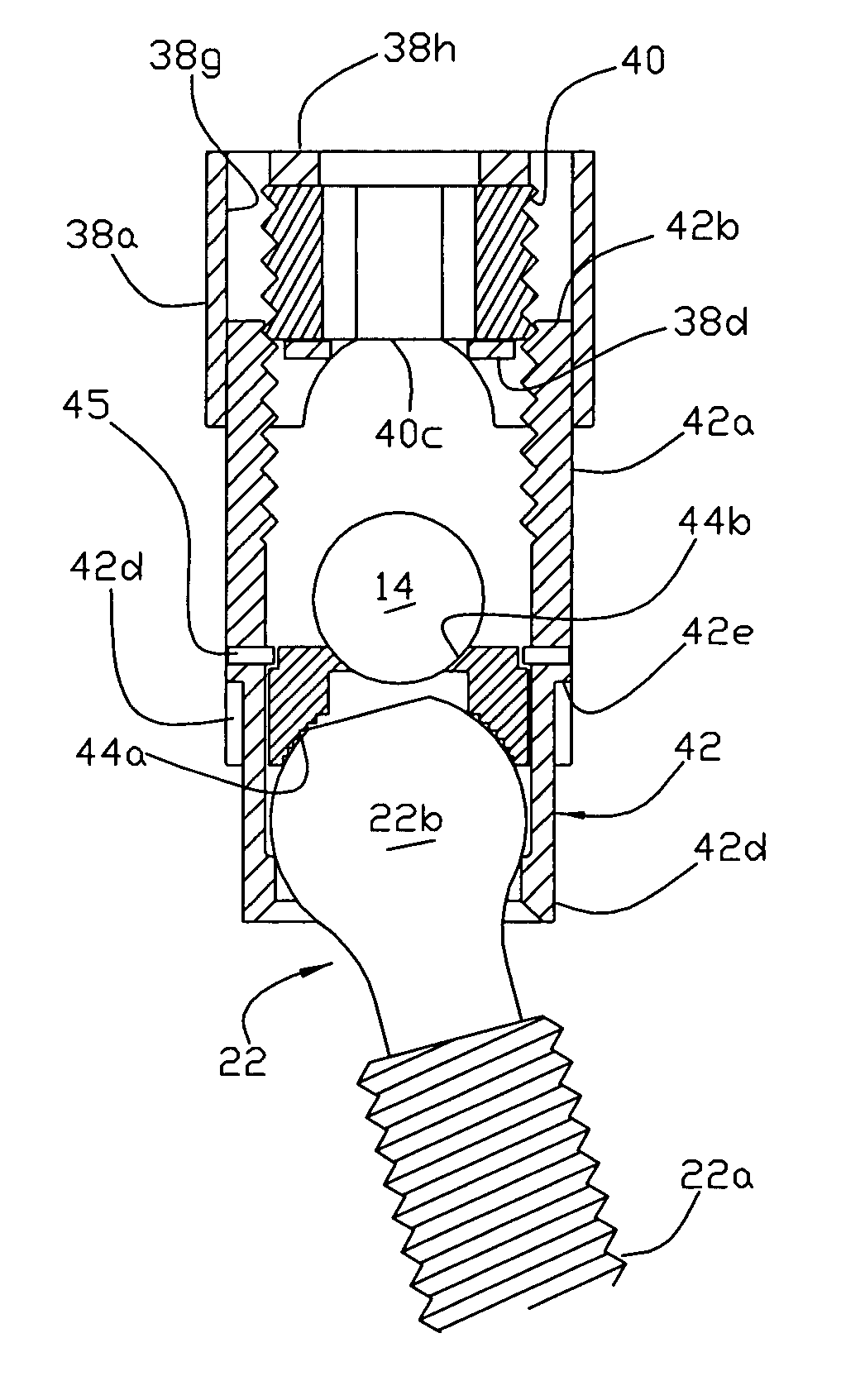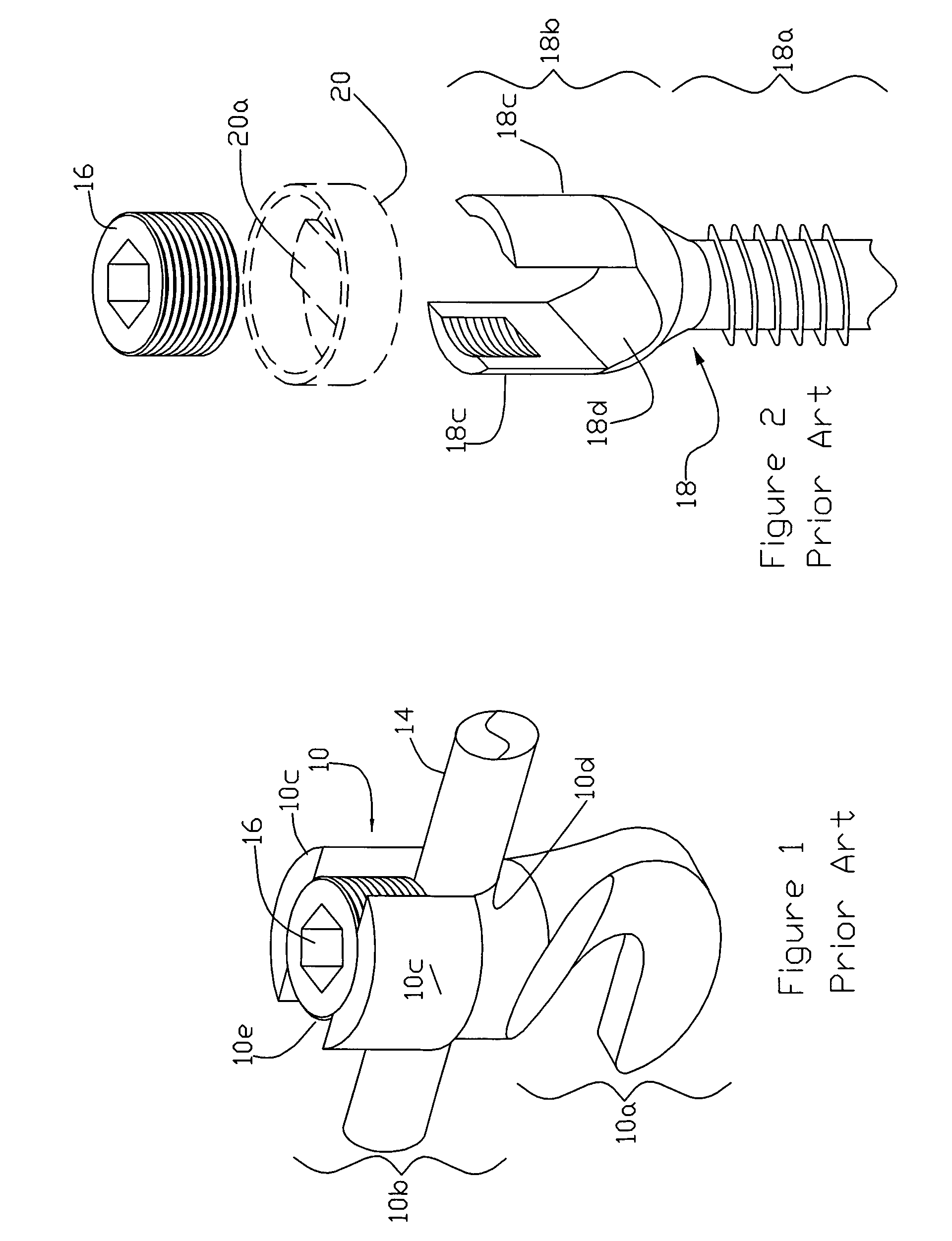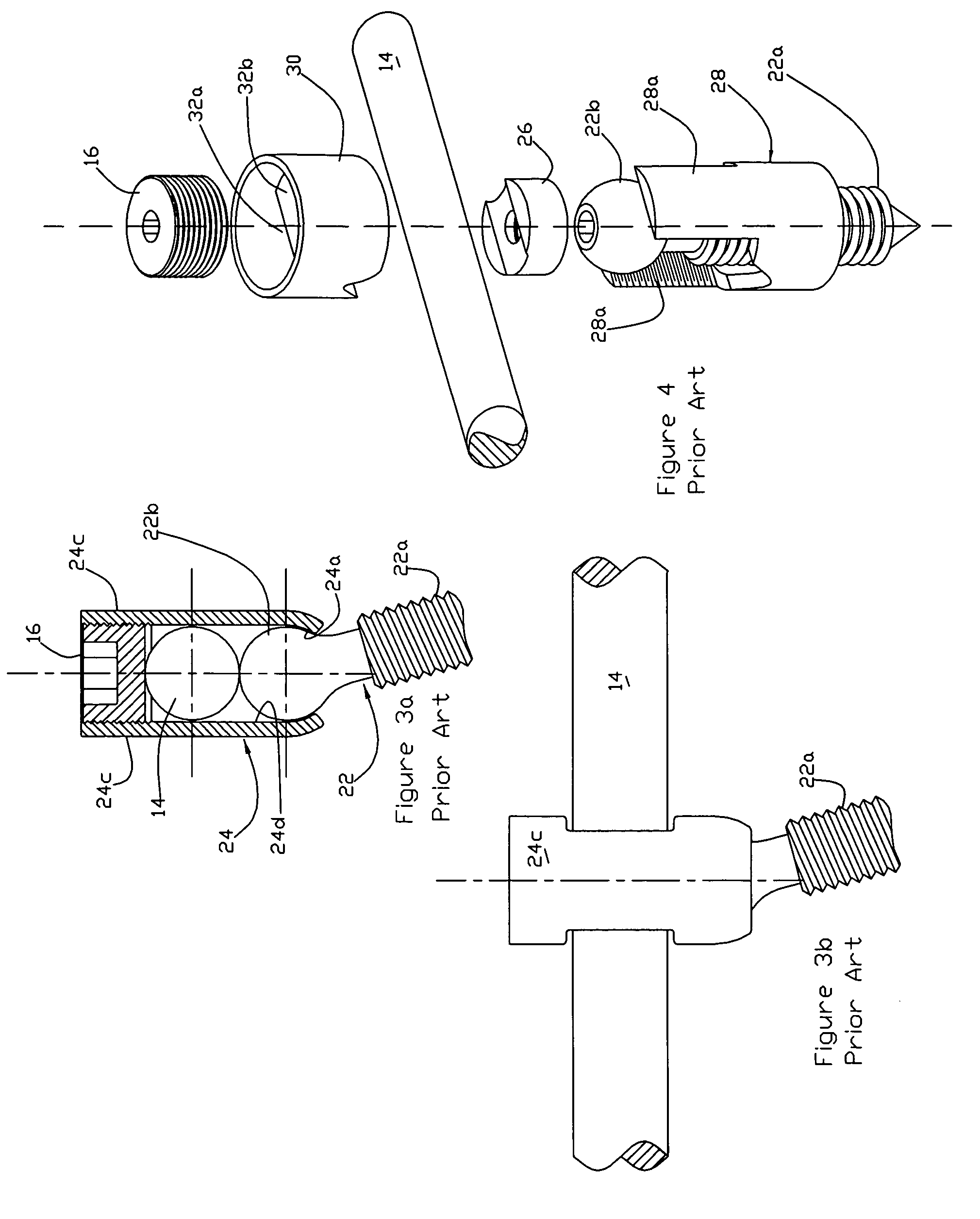Implant system for Osteosynthesis
a technology of implants and osteosynthesis, applied in the field of medical devices, can solve the problems of raising the vertical profile of the installed implant, cross threading and likely a failed installation, and the alignment of the set screw with the threaded posts
- Summary
- Abstract
- Description
- Claims
- Application Information
AI Technical Summary
Benefits of technology
Problems solved by technology
Method used
Image
Examples
Embodiment Construction
[0039] A partially completed cap 38 and a set screw 40 are illustrated in FIGS. 5a and 5b. The cap is manufactured from a high strength bio-compatible material such as titanium, e.g., by machining, a solid piece to provide opposed curved side walls 38a which are arranged to extend around and follow the outside contour of a generic implant's upstanding posts 36a (FIG. 6) leaving an open top. The implant posts have free edges 36b which are aligned parallel to the implant's longitudinal axis X1-X1. It is to be noted that the bottom section 36c of the generic implant of FIG. 7 may be of the hook, monoaxial or polyaxial type.
[0040] Flat end walls 38b of the cap extend between the side walls, as shown, and along with the side walls are arranged to encircle the implant posts. The inner surfaces 38c of the end walls are contoured to match the outer circumference of the set screw with a slight clearance, e.g., 0.0005 to 0.010″ to allow the set screw 40 to turn freely or with a slight resist...
PUM
 Login to View More
Login to View More Abstract
Description
Claims
Application Information
 Login to View More
Login to View More - R&D
- Intellectual Property
- Life Sciences
- Materials
- Tech Scout
- Unparalleled Data Quality
- Higher Quality Content
- 60% Fewer Hallucinations
Browse by: Latest US Patents, China's latest patents, Technical Efficacy Thesaurus, Application Domain, Technology Topic, Popular Technical Reports.
© 2025 PatSnap. All rights reserved.Legal|Privacy policy|Modern Slavery Act Transparency Statement|Sitemap|About US| Contact US: help@patsnap.com



